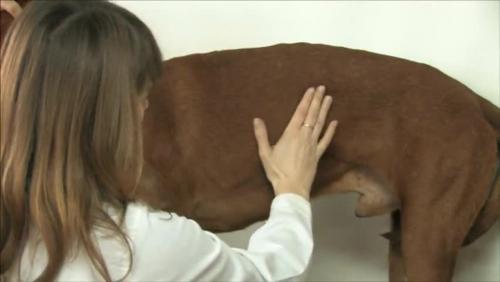In dogs, as in humans, various diseases can develop. Bladder. Urolithiasis, or stones in the bladder, formed in dogs more often than kidney stones. These stones may be different sizes, although in some cases the bladder may one big stone is formed.

One of the most common crystals for IBD in dogs are crystals of calcium oxalate (CaOx).
What causes the formation of stones in the bladder?
Contents
The exact causes of stone formation in the bladder are poorly understood. A healthy dog has mineral salts in the urine remain dissolved as long as the ph level remains in within a narrow corridor or until urine becomes too concentrated.
Modern studies show that urine is high the content of calcium, citrates, oxalates and acid predisposes to the formation of crystals and stones of calcium oxalate. Large studies show that a diet that causes increased urine acidity (ph level less than 6.5) may also increase the risk formations in the dog of stones in the bladder.
What are the symptoms of urolithiasis in dogs?
Symptoms of ICD are very similar to the symptoms of bladder infections. or cystitis. The most common sign of stones is hematuria (blood in the urine) and dysuria (obstructed urination). Hematuria occurs due to stones rubbing on the walls of the bubble and cause irritation and damage to its tissues, and also bleeding. Dysuria may result from inflammation and swelling of the walls of the bladder or urethra.
Large stones can act similarly to a valve, resulting in what may occur partial obstruction in the neck of the urinary the bubble. Small stones can enter the urethra with urine, where they can become stuck and cause obstruction. In this case, the dog may completely lose the ability to urinate, which sometimes leads to rupture of the bladder. Complete obstruction can be life threatening pet and requires immediate emergency care.
How are bladder stones diagnosed?
In some cases, the vet will be able to detect stones using palpation if the dog is calm enough and the bladder is not too painful. However, if the stones are too small, then palpation does not help determine their presence. Bladder stones often diagnosed with radiographs, or with ultrasound. The type of stones, as a rule, the veterinarian will be able to determine based on palpation, radiographs and urinalysis.
ICD treatment in dogs
There are two ways to treat bladder stones in dogs: 1) without surgical intervention, and 2) using surgical removal.
Small stones can be removed without surgery. interventions. However, this is only possible when the diameter The stones are very small. In some cases, this procedure performed under severe sedation, although common is often used anesthesia. If the veterinarian eats a cystoscope, then using this device small stones in the bladder and urethra can be removed without the need to resort to surgery.
Surgical removal is usually recommended in cases where bladder stones are too large, or very a large number, i.e. when there is a high risk of developing complete urinary obstruction. Surgery also applies if The problem should be solved as quickly as possible. Males have significantly higher risk of obstruction urinary tract, therefore, when stones are found in the urinary a dog’s bladder, the veterinarian usually recommends immediately surgical removal. Surgery is also used in cases when diet treatment was not successful. Your vet discuss with you the most appropriate treatment strategy for your dog based on the specific situation.
Are there any other treatment options?
Recently, the ultrasound method has been increasingly used. dissolving stones that use high frequency ultrasonic waves to destroy stones and remove them from the bubble in a natural way. This method has numerous advantages, the most important of which is the lack of need for surgical intervention.
How to prevent ICD in a dog?
Dogs that have already survived the ICD, it is advisable to feed a special therapeutic diet. A diet that will be contribute to a decrease in acidity and a decrease in urine concentration. Most dogs are advised to feed canned or moist feed and stimulate the consumption of large quantities water. In some cases, drugs are used to reduce ph, such as potassium citrate. If the dog eats homemade food, Vitamin B6 supplements are often added.
In addition, regular monitoring of urine for any signs of a bacterial infection. If the dog is observed any clinical symptoms, such as frequent urination, urinating in unusual places, painful urination, or the presence of blood in the urine, then it should be immediately shown to the veterinarian. Unfortunately, bladder stones have a fairly high frequency relapses despite close attention to the dog’s diet.






